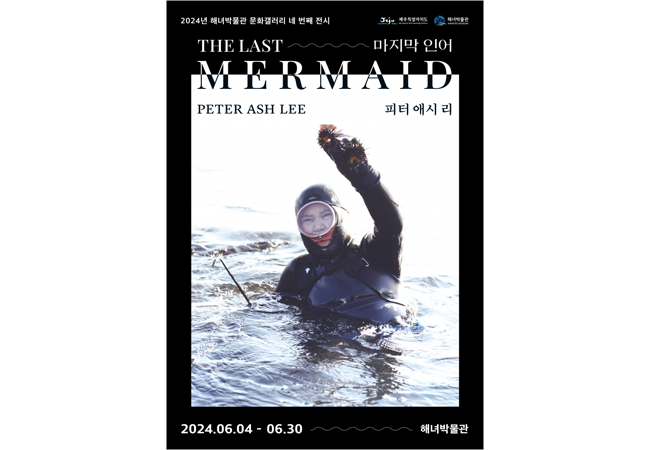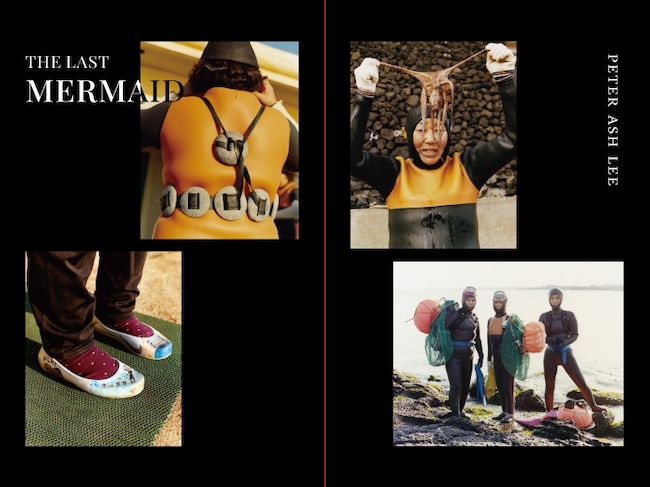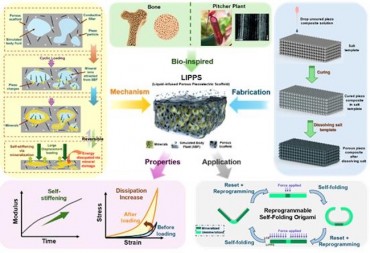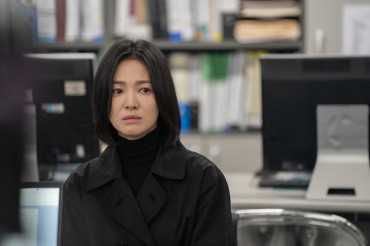
Lee’s exhibition, “The Last Mermaid,” which opened on June 4 and runs until June 30, features around 20 photographs that capture the resilience and beauty of the haenyeo. (Image courtesy of Jeju city)
JEJU, Jun. 7 (Korea Bizwire) – For the next few weeks, visitors to the Haenyeo Museum on the resort island of Jeju can glimpse into the vanishing world of the region’s celebrated free-diving women through the lens of Peter Ashley Lee, a 42-year-old photographer.
Lee’s exhibition, “The Last Mermaid,” which opened on June 4 and runs until June 30, features around 20 photographs that capture the resilience and beauty of the haenyeo, or “sea women,” from the village of Pyeongdae-ri in Gujwa. The artist, who was born in Seoul but spent time living in Toronto before basing himself in New York, first encountered Jeju’s unique female diving community during a trip to the island in December 2018.
“The history of Jeju is the history of the haenyeo,” Lee said, explaining that through portraying one of the youngest remaining practitioners, Ko Rye-jin, 39, who described herself as the “last mermaid” carrying on a three-generation legacy, he hopes to shed light on the haenyeo’s dwindling traditions.
The exhibition is the fourth in a series at the museum’s cultural gallery. A representative from the museum said they readily agreed to host the show after the photographer, who had published a book of the same name in Seoul’s Insa-dong neighborhood in April, reached out expressing his desire to mount it in Jeju. “The works capture the powerful beauty of the haenyeo with such high quality,” the representative said.

The haenyeo’s breath-holding fishing practices were inscribed on UNESCO’s list of Intangible Cultural Heritage in 2016. (Image courtesy of Jeju city)
While the haenyeo’s breath-holding fishing practices were inscribed on UNESCO’s list of Intangible Cultural Heritage in 2016, their numbers have been in decline. Currently, only around 3,200 women carry on the tradition across Jeju, with 41.2% aged 70 to 80, 27% in their 60s and 23.6% over 80. Those under 40 make up less than 1%.
In an oral history project, 84-year-old Go Chun-ok, who has been a haenyeo for 50 years, lamented that while it was the most lucrative job available, “I wouldn’t want my daughter or granddaughter to do it.” Their grueling work of freediving for seafood without breathing equipment is not for the faint of heart.
Still, Go stressed the importance of preserving the haenyeo’s legacy, stating, “If people from the haenyeo schools want to become sea women, each village should accept them unconditionally. As long as there are seas, they can be reborn as divers, can’t they? We must protect the ocean so the haenyeo can exist, and the haenyeo must exist to protect the ocean.”
“I hope this exhibition provides an opportunity to rediscover Jeju’s precious haenyeo cultural heritage,” said Jeju’s director of maritime affairs, Jeong Jae-cheol.
Lina Jang (linajang@koreabizwire.com)






